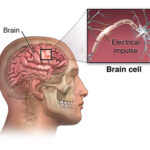Sedation in pediatric patients is a critical component of modern medical care, designed to alleviate pain, reduce anxiety, and ensure comfort during medical procedures or treatments. Whether in the emergency room, operating room, or outpatient setting, the proper use of sedative agents is essential to managing both the physical and emotional needs of children. Given the unique physiological and psychological characteristics of pediatric patients, sedation must be approached with careful consideration to avoid complications while ensuring the safety of the child.

Goals of Pediatric Sedation
The primary objectives of sedation in pediatric care include:
- Pain Management: Providing effective relief for both procedural and postoperative pain.
- Anxiety Reduction: Addressing the emotional distress that children may experience during medical procedures.
- Ensuring Safety: Minimizing risks and complications related to sedative agents while ensuring the child’s physiological stability.
The choice of sedative, dosage, and method must be tailored to the child’s age, medical history, and the procedure being performed.
Types of Sedation Techniques in Pediatric Patients
1. Oral Sedation
Oral sedation involves the administration of sedative medications in pill or liquid form. This technique is commonly used for minor medical or dental procedures where a mild to moderate sedative effect is sufficient.
- Medications Used: Common oral sedatives include midazolam, chloral hydrate, and hydroxyzine.
- Advantages: Non-invasive and easy to administer, especially for anxious children.
- Considerations: The onset of sedation may take longer than with other methods, and the child must be able to swallow the medication.
2. Intravenous (IV) Sedation
IV sedation is often used for moderate to deep sedation, especially during invasive procedures or surgeries. This technique offers rapid onset and more control over the level of sedation.
- Medications Used: Propofol, fentanyl, and ketamine are commonly used for pediatric IV sedation.
- Advantages: Provides rapid and predictable effects with the ability to adjust sedation levels as needed.
- Considerations: Requires intravenous access, and the child’s vital signs must be closely monitored during the procedure.
3. Inhalational Sedation (Nitrous Oxide)
Nitrous oxide, commonly known as “laughing gas,” is a mild sedative administered through inhalation. It is most commonly used for short, non-invasive procedures.
- Advantages: Rapid onset and offset, minimal side effects, and the child can recover quickly.
- Considerations: Less effective for procedures involving significant pain; may not be suitable for very young or non-compliant children.
4. General Anesthesia
In some cases, especially for longer or more complex procedures, general anesthesia may be required. This involves rendering the child unconscious through intravenous or inhalational anesthetic agents.
- Medications Used: Sevoflurane, propofol, and halothane.
- Advantages: Provides complete sedation and immobility, allowing for longer or more complex procedures.
- Considerations: Requires more intensive monitoring and carries a higher risk compared to lighter forms of sedation.
Safety Protocols in Pediatric Sedation
Ensuring the safety of pediatric patients during sedation is of utmost importance. Sedation protocols must be followed rigorously to minimize risks and ensure optimal outcomes. Key safety considerations include:
1. Pre-sedation Evaluation
Before administering sedation, a thorough evaluation of the child’s medical history, including allergies, previous reactions to anesthesia, and any underlying health conditions, is necessary. The child’s age, weight, and development also play a significant role in determining the appropriate sedation technique.
2. Monitoring Vital Signs
Continuous monitoring of the child’s vital signs is essential during sedation. This includes heart rate, respiratory rate, oxygen saturation, and blood pressure. Sedation can cause respiratory depression, so oxygen supplementation may be required, and resuscitation equipment should always be on hand.
3. Post-sedation Care
After sedation, pediatric patients require careful observation during recovery. The child should be monitored for signs of adverse reactions, including excessive sedation, respiratory distress, or nausea. The recovery room should be equipped with appropriate staff and monitoring tools to ensure a smooth transition to full alertness.
Sedation for Specific Pediatric Populations
Neonates and Infants
For neonates and infants, sedation should be approached with extra caution due to their immature organ systems. Non-invasive methods, such as oral sedation and inhalational sedation, are typically preferred for this age group. When using intravenous sedation, doses must be carefully calculated to avoid overdose.
Special Needs Children
Children with special needs may have unique requirements for sedation. Communication barriers or heightened anxiety may require a combination of oral sedatives and anxiolytic agents to achieve the desired effect. Close coordination with the child’s caregivers is essential to tailor the sedation approach.
Risks and Complications of Pediatric Sedation
While sedation is generally safe, there are risks associated with its use, especially in pediatric patients. Some potential complications include:
- Respiratory Depression: Many sedative agents can cause respiratory depression, requiring close monitoring of the child’s airway and oxygen levels.
- Allergic Reactions: Some sedatives may trigger allergic reactions, especially in children with a history of allergies.
- Over-sedation: Incorrect dosing or improper monitoring can lead to over-sedation, resulting in prolonged recovery times or severe respiratory complications.
- Post-sedation Delirium: Some children may experience confusion or agitation upon awakening from sedation, particularly after general anesthesia.
Best Practices for Pediatric Sedation
Sedation in pediatric patients is a vital aspect of healthcare, allowing for pain management, anxiety relief, and procedural success. By choosing the appropriate sedation method based on the child’s age, medical condition, and the procedure to be performed, healthcare providers can ensure both safety and comfort. Effective monitoring, proper dosing, and individualized care plans are essential to achieving the best outcomes for pediatric sedation.
By adhering to established sedation protocols, involving caregivers in decision-making, and prioritizing the child’s well-being, sedation in pediatric care can be both safe and effective, leading to positive experiences for young patients and their families.

